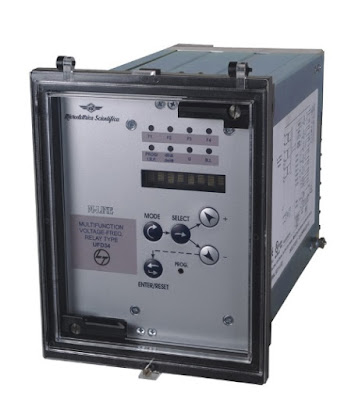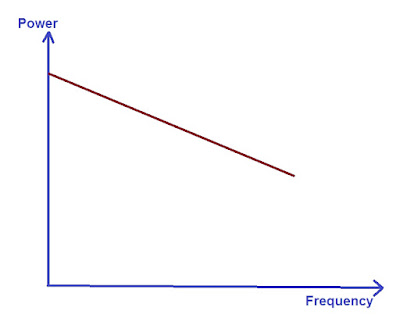Rate of Change of Frequency (ROCOF or df/dt) relay is used for fast load shedding, to speed up operation time in over- and under-frequency situations and to detect loss of grid. For better understanding of role and operation of df/dt relay, let us first study the variation of frequency with load for a Grid. Graphical relationship between power and frequency of a Grid is shown in figure below.
We can have two things to be noted from the above graph:
a) If the power available in the Grid increases i.e. in other words generation is more than the load, frequency will go up.
b) If the generation is less than load i.e. power deficient in the Grid then frequency will decreases.
Large power grids (here large power grid means having large installed capacity in MW) are characterized by a very high stiffness constant which means that a large perturbation (load generation mismatch) is required to cause the grid frequency to change by 1 Hz. Thus we can say that, for the same magnitude of perturbation, the rate of change of frequency (df/dt) will be much smaller for a very large power grid as compared to a medium sized grid. Therefore, large sized grids are inherently resilient to rapid frequency fluctuations.
If it happens that due to increase in load, frequency dips below a certain threshold the Generators connected to the Grid will trip which will result into further dip in frequency and such a cumulative dip in frequency result into complete failure of Grid. Thus there is a need of Rate of Change of Frequency or df/dt relay which can detect the dip in frequency earlier and initiate load shedding to resume the normal frequency of the Grid.
ROCOF or df/dt relays are particularly effective in arresting the frequency collapse of a grid in the event of sudden loss of major generation. This is because by measuring the frequency decay rate, the corrective action can be initiated much ahead of the time when frequency of the synchronous interconnection would have actually dipped to a point at which generator under-frequency relays or unit auxiliaries would trip / operate leading to a complete system shutdown. The df/dt is used for load shedding in situations where sudden loss of generating capacity on a system will be accompanied by a decrease in system frequency. In such a situation of load Generation mismatch, the system frequency tends to fall. The df/dt relay can control the circuit breakers and allow feeders to be disconnected from the network, one by one. Figure below shows a typical df/dt Relay.
 |
| Picture taken from L&T Products & Services |
The Rate of Change of Frequency (ROCOF) Relay operation is based on the measurement of two successive frequency and the time difference between the frequency measurements. The setting of the df/dt relay is in Frequency/Time e.g. 0.3Hz/second or 0.4 Hz/.5 seconds. The minimum df/dt relay setting available is 0.1 Hz/sec. However, some df/dt relays have a minimum setting of 0.2 Hz/sec only.

good
I have a question.
How sensitivity of relay change if we chang df/dt settings from 1 to 0.5?
will it become more sensitive or less sensitive??
IT IS EXCELLENT, KEEP GOING.
Thank you!